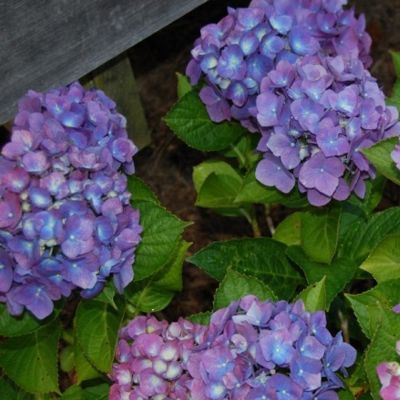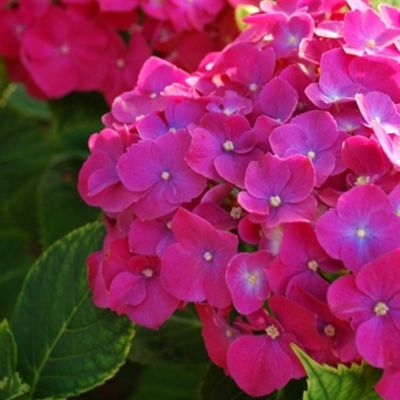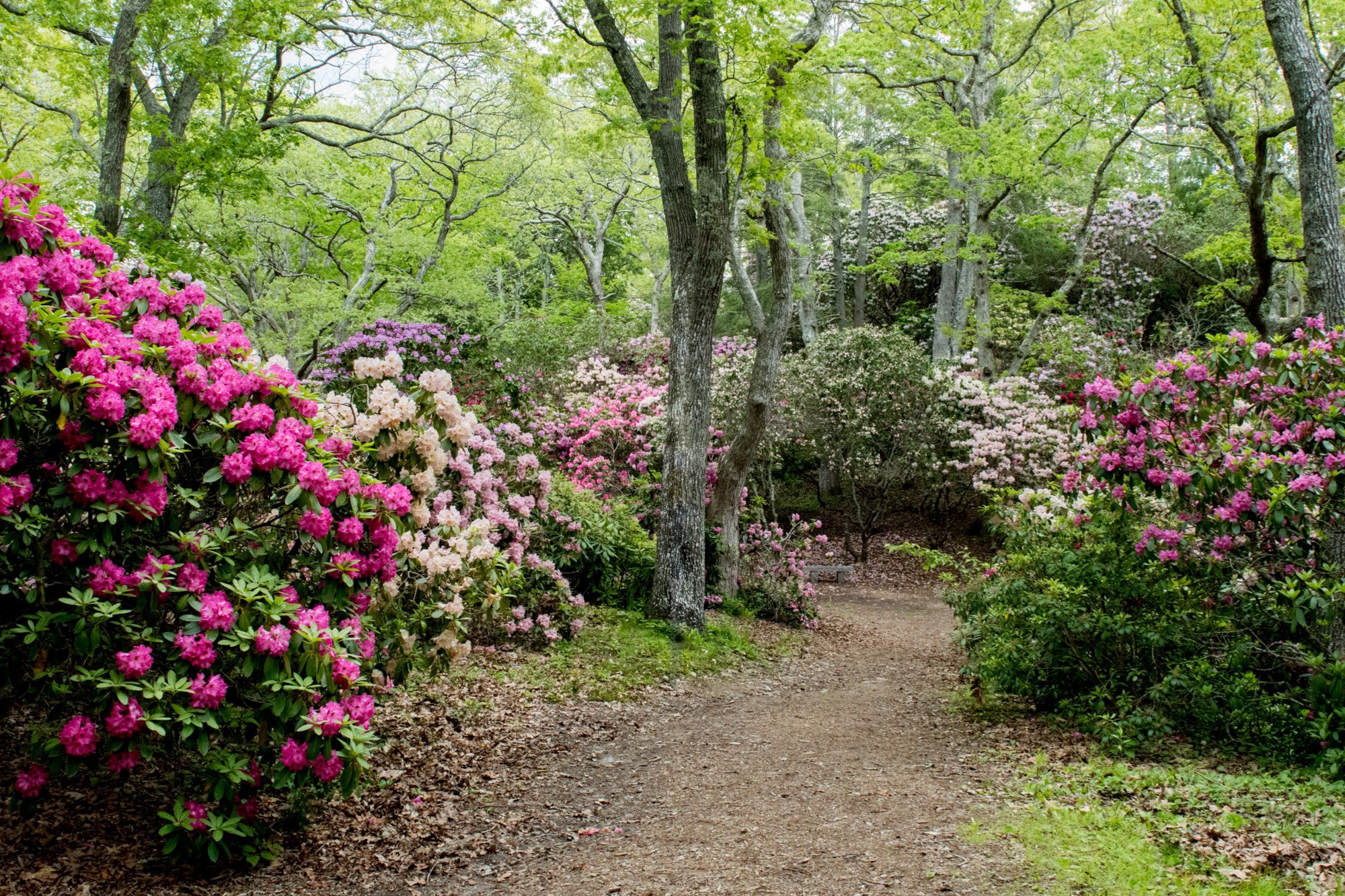Fertilizing Hydrangeas – Apply the KISS Approach
By: Mal Condon, Curator of Hydrangeas
One of the most common concerns for the home gardener regarding hydrangeas is fertilizing – how much, when and how? There is a lot of information out there on fertilizers, but luckily, I have found that a simple approach is the best approach.
Hydrangeas typically require low fertilizer addition; soil composition should be the primary ‘fertilizing’ concern. All species are good growers and ‘less is more’ with respect to fertilizing. Better to be ‘religious’ about modest annual amendments with compost and mulch.
The simplest practice is a single annual fertilizer application just after spring pruning time – typically mid-April, early May. This is the perfect time to give your hydrangeas a boost as they enter the most aggressive growth period of the growing season – May through August.
Fertilizer is identified by the N-P-K ratio shown on the bag – Nitrogen, Phosphorous, Potassium. The numbers on the bag indicate the relative weight of each element vs. the total weight of the mixture. There can be a substantial variation in these ratios/percentages. Major fertilizer producer Espoma offers ‘Holly-Tone’ – a popular and widely used fertilizer for hydrangeas of all species. The NPK ratio is low, just 4-3-4, but it is highly organic in composition and releases nutrients more slowly and effectively than many competitive products having higher ratios that are purely chemical extractions.
Stick to the more organic fertilizers, especially those containing trace elements like calcium, sulfur, magnesium, iron, silicon, and iron. The percentages are quite small but even these minor additions help to improve and fortify your entire soil composition. Remember too that the nutrient transfer to the soil and plant are limited to about 4 to 6 weeks and a second application may be necessary.
Controlled Release Fertilizers (often called ‘slow-release’) work very well on all Hydrangeas too. Osmocote® is the most well-known ‘CRF’ product and is available in moderate home gardener sizes and a few element ratios. On opening the bag you’ll quickly note the smooth round ‘prills’ which are formed using individual small amounts of the stated major and minor fertilizing elements blended together and polymer coated with a mixture that is water soluble at a specific temperature and for a specific time period – like 60 to 70 degrees F for 5 to 6 months. The beauty of CRF’s is their single season application is better tailored to the total growing season duration.
Fertilizer selection has one unusual and important influence on the Hydrangea macrophylla and Hydrangea serrata species relative to the much discussed topic of bloom color. Phosphorus – the P in the N-P-K ratio – counteracts aluminum uptake in the plant’s system which gives these species their distinctive blue blossoms. The simple approach works here as well – use fertilizers with low phosphorus levels, something in the vicinity of 15-5-15. We use a CRF with a 14-3-17 ratio at Heritage with excellent results on ALL hydrangea species. Our native soils contain very adequate levels of phosphorous – and aluminum as well. Little reason to add what’s not needed.
Water soluble fertilizers can be also used on your hydrangeas, especially on new plantings or those recovering from stress. MiracleGro®, the most widely used liquid product on the market, has an N-P-K ratio of 15-30-15. This high phosphorous level is not ideal for a sustained ‘blue’ hydrangea fertilization program but for spot use, the nutrient charge can be immediate and beneficial for ‘restarting’ stressed plants.
I have added some related Bloom Color commentary below. Although the subject is fairly well understood, this review might provide some worthy ‘reinforcement’ on the subject. Remember, bloom color ONLY applies to H. macrophylla and H. serrata – you’ll never get your ‘Annabelle’ hydrangeas to turn from white to blue!
Bloom Color Basics – H. macrophylla & H. serrata
- Bloom Color ‘manipulation’ is only achievable with these two hydrangea species and is most associated with plants having mophead bloom form.
- Primary soil component for making blue blossoms is the presence of aluminum in the soil. pH is closely relevant too as the aluminum is only available to the hydrangea root mass if the soil pH level is below 5.6.
- Bloom color can be substantially altered depending on soil pH – but should not be overdone; in the best sense it’s ‘Color Enhancement’.
- Soil pH for ‘Blues’ = 5.0 to 5.6, for ‘Pinks’ = 6.0+
- Cultivars having pale bloom pigment – ‘Nikko Blue’ – can be readily ‘adjusted’ between pink and blue.
- Medium to dark blue varieties – ‘Mathilda Gutges’ – can be decent fuchsia pinks but are much more brilliant in their normal purple-blue hues via aluminum sulfate as shown below.
‘Mathilda Gutges’

Tips for achieving blue hydrangea macrophylla:
• Eastern US soils are typically acidic with pH levels in range of 5.2 to 5.6 = easy to produce rich blue flowers.
• Aluminum sulfate is the widely used soil acidifier; apply as a drench = 1 Tbl./gal. Water plant well before adding acidifier. New CRF (controlled release fertilizers) look very encouraging.
• Apply after pruning to plant base,1/2 to 2 gal./plant. Limit applications to two per year.
• Municipal water suppliers may be buffering (raising) pH levels.
• Concrete foundations and walkways can leach lime and raise soil pH.

Tips for achieving blue hydrangea macrophylla:
• Changing to/or enhancing pinks and reds requires moving soil pH to a more neutral level – 6.0 to 6.4.
• Substantial lime addition – common garden dolomitic lime – is the best soil ‘sweetener’.
• Apply in fall and spring at moderate rates – ½ to 1 cup/plant, thoroughly watering after application.
• Check pH of your water source; well water may be more acidic and counteract your ‘pinking’ effort.
• Be patient; it may take a few years to achieve the desired pH – and the desired color. The soil mass is substantial for in-ground plants.








